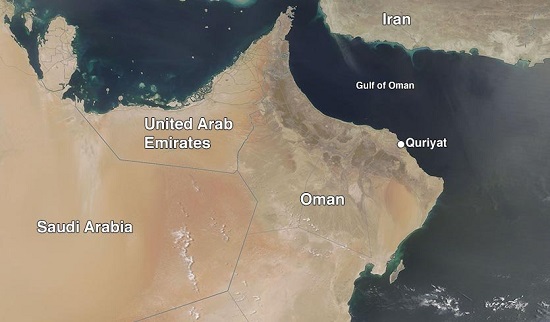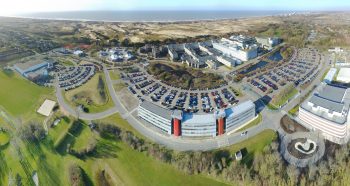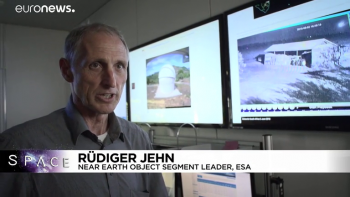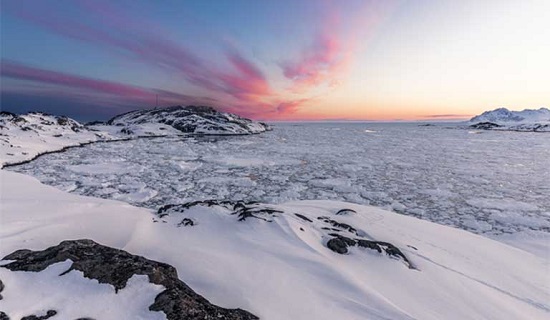Editor's Pick
A city in Oman just posted the world’s hottest low temperature ever recorded: 109 degrees

Above: MODIS satellite image from June 26, 2018 shows clear weather over Oman on the day the 24-hour world high-minimum temperature record was set at Quriyat, Oman. Image credit: NASA.
Over a period of 24 hours, the temperature in the coastal city of Quriyat, Oman, never dropped below 108.7 degrees (42.6 Celsius) Tuesday, most likely the highest minimum temperature ever observed on Earth.
For a location to remain no lower than 109 degrees around the clock is mind-boggling. In many locations, a temperature of 109 degrees even during the heat of the afternoon would be unprecedented. For example, in nearly 150 years of weather records, Washington, D.C.’s high temperature has never exceeded 106 degrees.
Quriyat’s suffocating low temperature, first reported by Jeff Masters at Weather Underground, breaks the world’s previous hottest minimum temperature of 107.4 degrees (41.9 Celsius), also set in Oman, on June 27, 2011.
Masters received word of the exceptional temperature from weather records expert Maximiliano Herrera. Incredibly, the temperature in Quriyat, Masters said, remained above 107.4 degrees (41.9 Celsius) for 51 straight hours. Its blistering afternoon high temperature of 121.6 degrees (49.8 Celsius) Tuesday was just about two degrees shy of Oman’s all-time heat record and its highest June temperature, Masters reported.
A city in Oman just posted the world’s hottest low temperature ever recorded: 109 degrees by Jason Samenow, Capital Weather Gang, Washington Post, June 7, 2018
Links posted on Facebook
Sun June 24, 2018
- New research, June 11-17, 2018 by Ari Jokimäki, Skeptical Science, June 22, 2018
- A Sea Change in Science by Eve Andrews, Grist, June 19, 2018
- 30 years after Hansen’s testimony by Gavin Schmidt, Real Climate, June 21, 2018
- Report: Trump Admin. Suppressing Media Access of Government Scientists by Lorraine Chow, EcoWatch, June 21, 2018
- A Prophet of Doom Was Right About the Climate, Opinion by Justin Gillis, Sunday Review, New York Times, June 23, 2018
- Coral reefs ‘will be overwhelmed by rising oceans’ by Robin McKie, Environment, Observer/Guardian, June 23, 2018
- Climate Change Sparked the Border Migration Crisis by Tanya Basu, Daily Beast, June 21, 2018
- Some rare good climate news: the fossil fuel industry is weaker than ever, Opinion by Bill McKibben, Comment is Free, Guardian, June 21, 2018
Mon June 25, 2018
- Misinformation and biases infect social media, both intentionally and accidentally by Giovanni Luca Ciampaglia & Filippo Menczer, The Conversation US, June 20, 2018
- Climate change to become ‘greatest pressure on biodiversity’ by 2070 by Daisy Dunne, Carbon Brief, Jun 21, 2018
- How do we process doom-and-gloom climate news? How should we? by Carolyn Beeler, PRI, June 21, 2018
- Land uplift ‘could prevent’ collapse of West Antarctic ice sheet by Daisy Dunne, Carbon Brief, June 21, 2018
- A Leading Climate Agency May Lose Its Climate Focus by John Schwartz, Climate, New York Times, June 24, 2018
- 30 years later, deniers are still lying about Hansen’s amazing global warming prediction by Dana Nuccitelli, Climate Consensus - the 97%, Environment, Guardian, June 25, 2018
- Atlantification’ of Arctic sea tipping it towards new climate regime by Robert McSweeney, Carbon Brief, June 25, 2018
- Northern California Is Burning Up Again by Brian Kahn, Earther, June 25, 2018
Tue June 26, 2018
- Record emissions keep Australia on path to missing Paris target by Lisa Cox, Environment, Guardian, June 25, 2018
- Immense rains are causing more flash flooding, and experts say it’s getting worse by Tim Craig & Angela Fritz, National, Washington Post, June 24, 2018
- Energy lobbyists have a new PAC to push for a carbon tax. Wait, what? by David Roberts, Energy & Environment, Vox, June 23, 2018
- Federal Judge Dismisses San Francisco, Oakland Climate Suits by Dana Drugmand, Climate Liability News, June 26, 2018
- NOAA head hails agency’s ‘important climate and conservation efforts’ amid outcry over proposed mission change by Chris Mooney, Energy & Environment, Washington Post, June 26, 2018
- Unprecedented summer heat in Europe ‘every other year’ under 1.5C of warming, Guest Post by Andrew King & Markus Donat, Carbon Brief, June 26, 2018
- Shell has Admitted Climate Change Could Affect the Company's Bottom Line by Mike Small, DeSmog UK, June 25, 2018
- Rising seas: 'Florida is about to be wiped off the map' by Elizabeth Rush, Environment, Guardian, June 26, 2018
Wed June 27, 2018
- Ocean Agency Must Keep Its Focus on Climate Change and Sustaining Marine Ecosystems by Andrew Rosenberg, Union of Concerned Scientists, June 26, 2018
- The amazing return of the starfish: species triumphs over melting disease by Tay Wiles, Environment, Guardian, June 26, 2018
- Europe's first solar panel recycling plant opens in France by Geert De Clercq, Reuters, June 25, 2018
- Tropical Forests Lost 40 Football Fields of Tree Cover Per Minute in 2017 by Damian Carrington, Niko Kommenda, Pablo Gutiérrez & Cath Levett, Environment, Guardian, June 27, 2018
- Renewable energy set to supply one-third of market needs by 2020 by Stephen Letts & Lucy Barbour, ABC News (Australia), June 26, 2018
- Barents Sea seems to have crossed a climate tipping point by John Timmer, Ars Technica, June 26, 2018
- Could El Niño and climate change spell the end for tropical forests? by Claire Salisbury, Mongabay, June 25, 2018
- Court Becoming Impatient with EPA Over Clean Power Plan by Nina Heikkinen, E& E News, Scientific American, June 27, 2018
Thu June 28, 2018
- Climate change is a top spiritual priority for these religious leaders by Juliet Eilperin, Health & Science. Washington Post, June 26, 2018
- Trump should inspire us all, but not in the way you might guess by John Abraham, Climate Consensus - the 97%, Environment, Guardian, June 27, 2018
- Electric vehicles are gaining momentum, despite Trump by David Roberts, Energy & Environment, Vox, June 27, 2018
- A city in Oman just posted the world’s hottest low temperature ever recorded: 109 degrees by Jason Samenow, Capital Weather Gang, Washington Post, June 7, 2018
- Antarctica has lost 2.71 trillion tons of ice. Here’s what that looks like. by Umair Irfan & Javier Zarracina, Energy & Environment, Vox, June 27, 2018
- 11 States Sue Trump Administration Over Climate Super-Pollutants Used in Cooling by Marianne Lavalle, InsideClimate News, June 27, 2018
- America's About to Miss a Big Obama-Era Climate Goal as Trump Dismantles Policies by Jim Efstathiou Jr, Climate-Changed, Bloomberg News, June 28, 2018
- This Tiny California Beach Town Is Suing Big Oil. It Sees This as a Fight for Survival. by David Hasemyer, InsideClimate News, June 27, 2018
Fri June 29, 2018
- UK environment policies in tatters, warn green groups by Matthew Taylor, Environment, Guardian, June 27, 2018
- Here’s How Much Cities Contribute to the World’s Carbon Footprint by Maya Miller, Scientific America, June 27, 2018
- Study of reefs reveals benefits of keeping global warming in check by Peter Hannam. Sydney Morning Herald, June 28, 2018
- Justice Kennedy’s Retirement Could Reshape the Environment by Robinson Meyer, The Atlantic, June 27, 2018
- Our natural world is disappearing before our eyes. We have to save it, Opinion by George Monbiot, Opinion is Free, Guardian, June 29, 2018
- Warming of 2C ‘substantially’ more harmful than 1.5C – draft UN report by Karl Mathiesen, Megan Darby & Soila Apparicio, Climate Home News, June 27, 2018
- These Are the Toughest Emissions to Cut, and a Big Chunk of the Climate Problem by Nicholas Kusnetz, InsideClimate News, June 28, 2018
- This Miami street could be the blueprint for how the city handles sea level rise by Alex Harris & Joey Flechas, Miami Herald, June 28, 2018
Sat June 30, 2018
- The Carbon Brief Profile: Japan by Jocelyn Timperley, Carbon Brief, June 25, 2018
- Trade war would harm the environment, warns UN green chief by Karl Mathiesen, Climate Home News, June 28, 2018
- How to talk about climate change: 5 tips from the front lines by Jane Burston, World Economic Forum, June 28, 2018
- Climate change has turned Peru's glacial lake into a deadly flood timebomb by Dan Collyns, Environment, Guardian, June 29, 2018
- Atlanta Charts a Path to 100 Percent Renewable Electricity by James Brugger, InsideClimate News, June 26, 2018
- Half of South Asia living in vulnerable climate "hotspots" -World Bank by Malini Menon, Reuters, June 28, 2018
from Skeptical Science https://ift.tt/2KkJzyi
Editor's Pick
A city in Oman just posted the world’s hottest low temperature ever recorded: 109 degrees

Above: MODIS satellite image from June 26, 2018 shows clear weather over Oman on the day the 24-hour world high-minimum temperature record was set at Quriyat, Oman. Image credit: NASA.
Over a period of 24 hours, the temperature in the coastal city of Quriyat, Oman, never dropped below 108.7 degrees (42.6 Celsius) Tuesday, most likely the highest minimum temperature ever observed on Earth.
For a location to remain no lower than 109 degrees around the clock is mind-boggling. In many locations, a temperature of 109 degrees even during the heat of the afternoon would be unprecedented. For example, in nearly 150 years of weather records, Washington, D.C.’s high temperature has never exceeded 106 degrees.
Quriyat’s suffocating low temperature, first reported by Jeff Masters at Weather Underground, breaks the world’s previous hottest minimum temperature of 107.4 degrees (41.9 Celsius), also set in Oman, on June 27, 2011.
Masters received word of the exceptional temperature from weather records expert Maximiliano Herrera. Incredibly, the temperature in Quriyat, Masters said, remained above 107.4 degrees (41.9 Celsius) for 51 straight hours. Its blistering afternoon high temperature of 121.6 degrees (49.8 Celsius) Tuesday was just about two degrees shy of Oman’s all-time heat record and its highest June temperature, Masters reported.
A city in Oman just posted the world’s hottest low temperature ever recorded: 109 degrees by Jason Samenow, Capital Weather Gang, Washington Post, June 7, 2018
Links posted on Facebook
Sun June 24, 2018
- New research, June 11-17, 2018 by Ari Jokimäki, Skeptical Science, June 22, 2018
- A Sea Change in Science by Eve Andrews, Grist, June 19, 2018
- 30 years after Hansen’s testimony by Gavin Schmidt, Real Climate, June 21, 2018
- Report: Trump Admin. Suppressing Media Access of Government Scientists by Lorraine Chow, EcoWatch, June 21, 2018
- A Prophet of Doom Was Right About the Climate, Opinion by Justin Gillis, Sunday Review, New York Times, June 23, 2018
- Coral reefs ‘will be overwhelmed by rising oceans’ by Robin McKie, Environment, Observer/Guardian, June 23, 2018
- Climate Change Sparked the Border Migration Crisis by Tanya Basu, Daily Beast, June 21, 2018
- Some rare good climate news: the fossil fuel industry is weaker than ever, Opinion by Bill McKibben, Comment is Free, Guardian, June 21, 2018
Mon June 25, 2018
- Misinformation and biases infect social media, both intentionally and accidentally by Giovanni Luca Ciampaglia & Filippo Menczer, The Conversation US, June 20, 2018
- Climate change to become ‘greatest pressure on biodiversity’ by 2070 by Daisy Dunne, Carbon Brief, Jun 21, 2018
- How do we process doom-and-gloom climate news? How should we? by Carolyn Beeler, PRI, June 21, 2018
- Land uplift ‘could prevent’ collapse of West Antarctic ice sheet by Daisy Dunne, Carbon Brief, June 21, 2018
- A Leading Climate Agency May Lose Its Climate Focus by John Schwartz, Climate, New York Times, June 24, 2018
- 30 years later, deniers are still lying about Hansen’s amazing global warming prediction by Dana Nuccitelli, Climate Consensus - the 97%, Environment, Guardian, June 25, 2018
- Atlantification’ of Arctic sea tipping it towards new climate regime by Robert McSweeney, Carbon Brief, June 25, 2018
- Northern California Is Burning Up Again by Brian Kahn, Earther, June 25, 2018
Tue June 26, 2018
- Record emissions keep Australia on path to missing Paris target by Lisa Cox, Environment, Guardian, June 25, 2018
- Immense rains are causing more flash flooding, and experts say it’s getting worse by Tim Craig & Angela Fritz, National, Washington Post, June 24, 2018
- Energy lobbyists have a new PAC to push for a carbon tax. Wait, what? by David Roberts, Energy & Environment, Vox, June 23, 2018
- Federal Judge Dismisses San Francisco, Oakland Climate Suits by Dana Drugmand, Climate Liability News, June 26, 2018
- NOAA head hails agency’s ‘important climate and conservation efforts’ amid outcry over proposed mission change by Chris Mooney, Energy & Environment, Washington Post, June 26, 2018
- Unprecedented summer heat in Europe ‘every other year’ under 1.5C of warming, Guest Post by Andrew King & Markus Donat, Carbon Brief, June 26, 2018
- Shell has Admitted Climate Change Could Affect the Company's Bottom Line by Mike Small, DeSmog UK, June 25, 2018
- Rising seas: 'Florida is about to be wiped off the map' by Elizabeth Rush, Environment, Guardian, June 26, 2018
Wed June 27, 2018
- Ocean Agency Must Keep Its Focus on Climate Change and Sustaining Marine Ecosystems by Andrew Rosenberg, Union of Concerned Scientists, June 26, 2018
- The amazing return of the starfish: species triumphs over melting disease by Tay Wiles, Environment, Guardian, June 26, 2018
- Europe's first solar panel recycling plant opens in France by Geert De Clercq, Reuters, June 25, 2018
- Tropical Forests Lost 40 Football Fields of Tree Cover Per Minute in 2017 by Damian Carrington, Niko Kommenda, Pablo Gutiérrez & Cath Levett, Environment, Guardian, June 27, 2018
- Renewable energy set to supply one-third of market needs by 2020 by Stephen Letts & Lucy Barbour, ABC News (Australia), June 26, 2018
- Barents Sea seems to have crossed a climate tipping point by John Timmer, Ars Technica, June 26, 2018
- Could El Niño and climate change spell the end for tropical forests? by Claire Salisbury, Mongabay, June 25, 2018
- Court Becoming Impatient with EPA Over Clean Power Plan by Nina Heikkinen, E& E News, Scientific American, June 27, 2018
Thu June 28, 2018
- Climate change is a top spiritual priority for these religious leaders by Juliet Eilperin, Health & Science. Washington Post, June 26, 2018
- Trump should inspire us all, but not in the way you might guess by John Abraham, Climate Consensus - the 97%, Environment, Guardian, June 27, 2018
- Electric vehicles are gaining momentum, despite Trump by David Roberts, Energy & Environment, Vox, June 27, 2018
- A city in Oman just posted the world’s hottest low temperature ever recorded: 109 degrees by Jason Samenow, Capital Weather Gang, Washington Post, June 7, 2018
- Antarctica has lost 2.71 trillion tons of ice. Here’s what that looks like. by Umair Irfan & Javier Zarracina, Energy & Environment, Vox, June 27, 2018
- 11 States Sue Trump Administration Over Climate Super-Pollutants Used in Cooling by Marianne Lavalle, InsideClimate News, June 27, 2018
- America's About to Miss a Big Obama-Era Climate Goal as Trump Dismantles Policies by Jim Efstathiou Jr, Climate-Changed, Bloomberg News, June 28, 2018
- This Tiny California Beach Town Is Suing Big Oil. It Sees This as a Fight for Survival. by David Hasemyer, InsideClimate News, June 27, 2018
Fri June 29, 2018
- UK environment policies in tatters, warn green groups by Matthew Taylor, Environment, Guardian, June 27, 2018
- Here’s How Much Cities Contribute to the World’s Carbon Footprint by Maya Miller, Scientific America, June 27, 2018
- Study of reefs reveals benefits of keeping global warming in check by Peter Hannam. Sydney Morning Herald, June 28, 2018
- Justice Kennedy’s Retirement Could Reshape the Environment by Robinson Meyer, The Atlantic, June 27, 2018
- Our natural world is disappearing before our eyes. We have to save it, Opinion by George Monbiot, Opinion is Free, Guardian, June 29, 2018
- Warming of 2C ‘substantially’ more harmful than 1.5C – draft UN report by Karl Mathiesen, Megan Darby & Soila Apparicio, Climate Home News, June 27, 2018
- These Are the Toughest Emissions to Cut, and a Big Chunk of the Climate Problem by Nicholas Kusnetz, InsideClimate News, June 28, 2018
- This Miami street could be the blueprint for how the city handles sea level rise by Alex Harris & Joey Flechas, Miami Herald, June 28, 2018
Sat June 30, 2018
- The Carbon Brief Profile: Japan by Jocelyn Timperley, Carbon Brief, June 25, 2018
- Trade war would harm the environment, warns UN green chief by Karl Mathiesen, Climate Home News, June 28, 2018
- How to talk about climate change: 5 tips from the front lines by Jane Burston, World Economic Forum, June 28, 2018
- Climate change has turned Peru's glacial lake into a deadly flood timebomb by Dan Collyns, Environment, Guardian, June 29, 2018
- Atlanta Charts a Path to 100 Percent Renewable Electricity by James Brugger, InsideClimate News, June 26, 2018
- Half of South Asia living in vulnerable climate "hotspots" -World Bank by Malini Menon, Reuters, June 28, 2018
from Skeptical Science https://ift.tt/2KkJzyi











